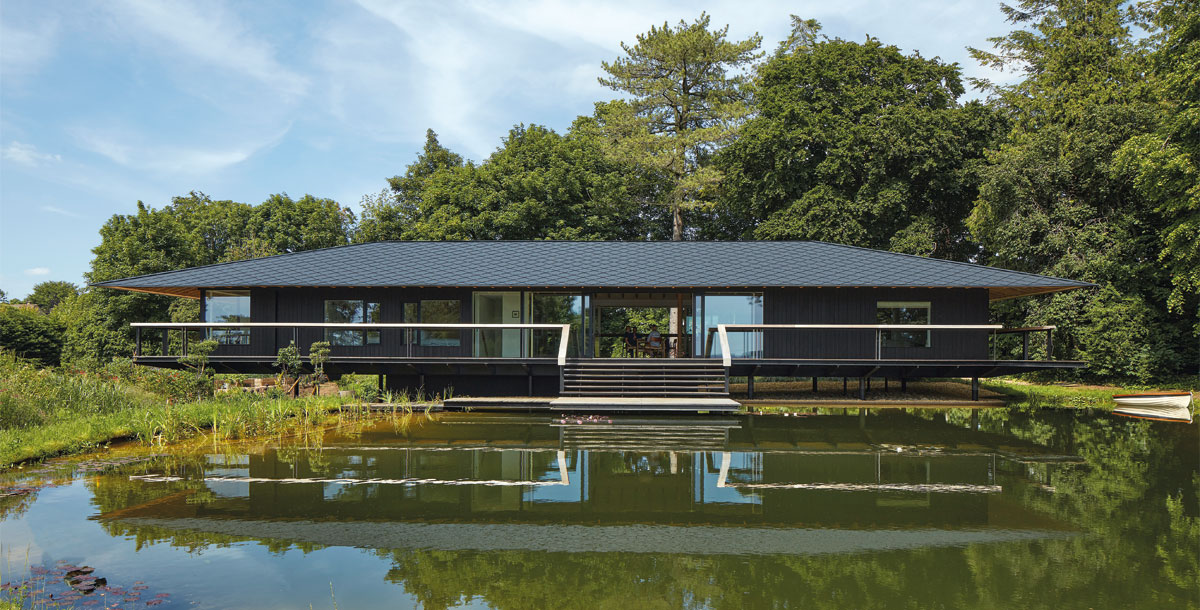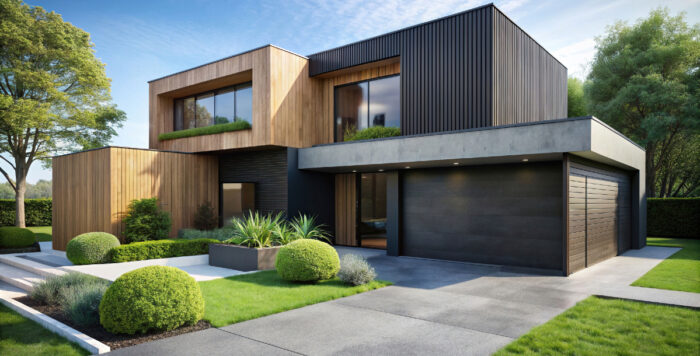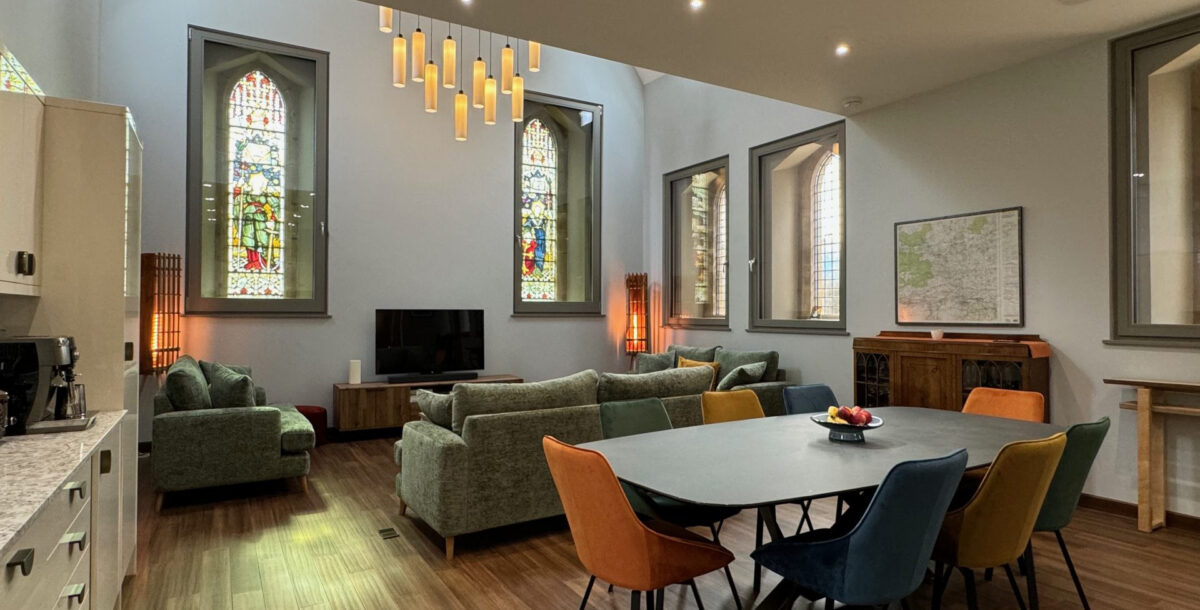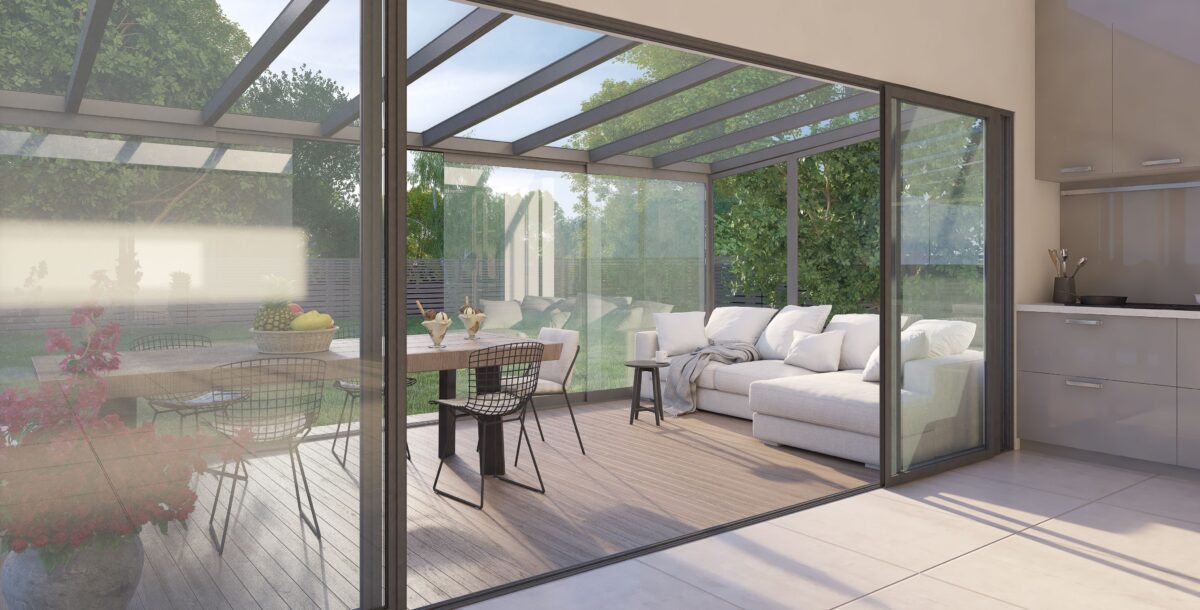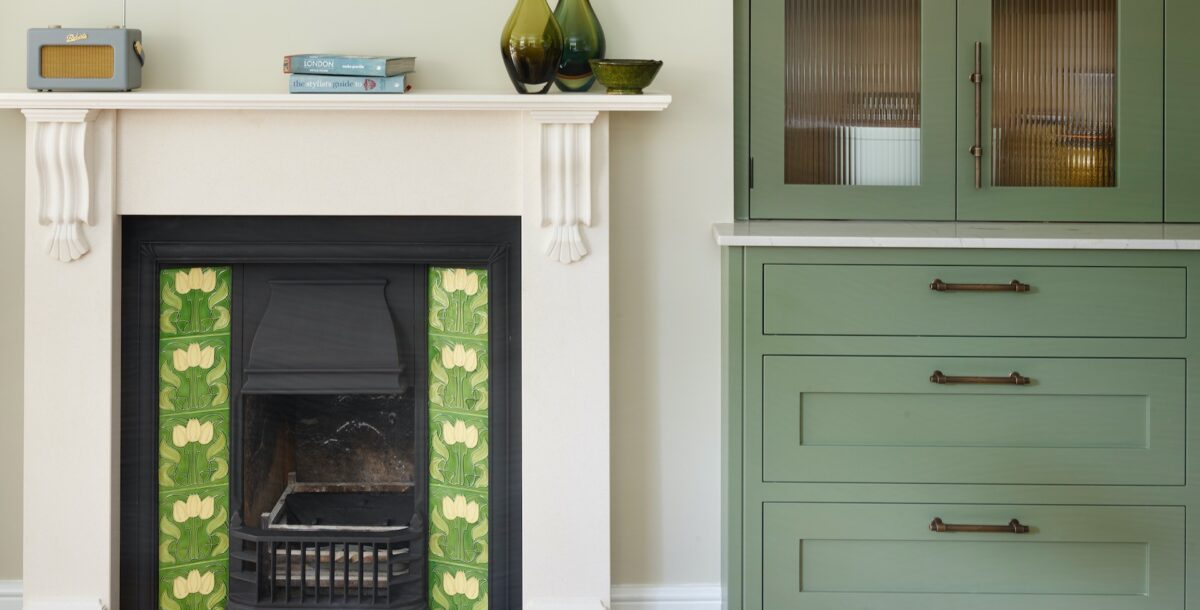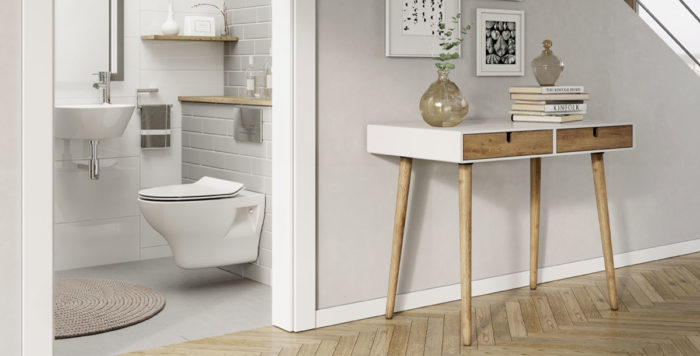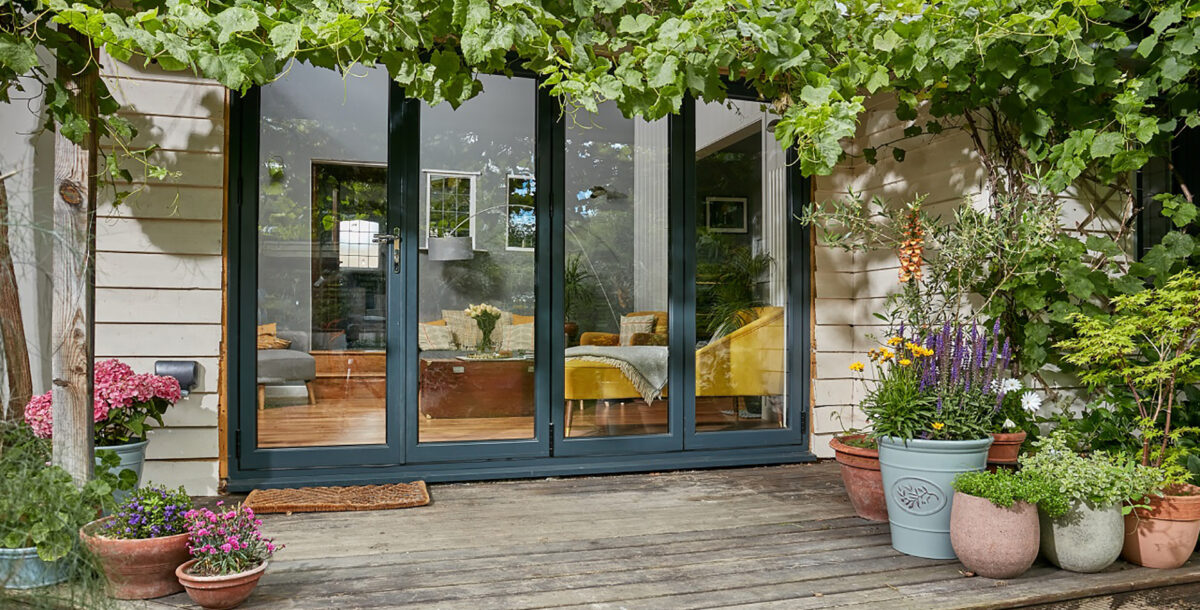An exceptional self-build
Breaking with the tradition of using limestone to build their home in the Cotswolds, one couple went with a striking timber design
The Cotswolds is known for its honey-coloured limestone buildings, but Tim Healy and Annie Heyworth’s three-bedroom home near Cirencester is quite different. Mostly hidden from the road, it’s long, low, and black.
Semi-retired endoscopist Tim, 71, and Annie, 66, who is an artist, were set on building something contemporary. Although they worried about what might be permitted, they found the local planning department’s approach refreshing. ‘The attitude was, “If no one can see it, do something exciting,”’ says Annie.
Their home is the result of a collaboration between architect Nick Lyons of Lyons Architects and architectural design consultant Hamish Herford, and takes its cues from Japanese buildings, featuring charred modified timber cladding, an overhanging black aluminium tile roof and a wraparound veranda. ‘The deep eaves really lend themselves to the UK climate, so Tim and Annie can enjoy the outside all year,’ says Nick.
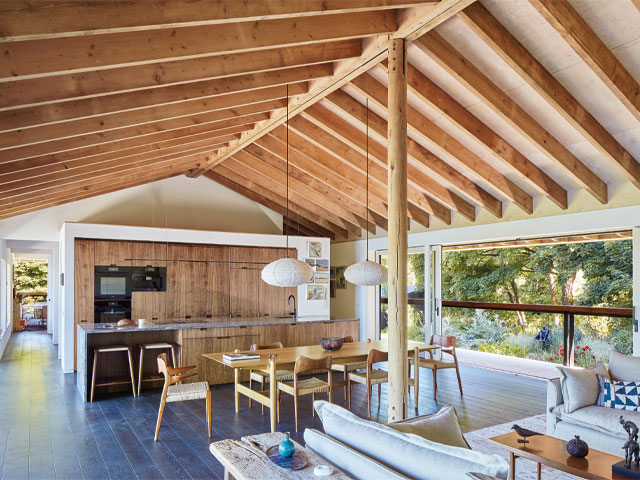
In the open plan living space, a joiner built the kitchen to the architect’s design. The units are American walnut, with a patterned blue granite worksurface. Photo: James Brittain
In contrast to the dark timber, Tim planted a delicate prairie-style garden, wildflower meadows and a vegetable plot with hundreds of plants grown off site during the build.
Most notable is the south-facing pond reached down a set of steps from the open-plan living space or a diving board near Tim and Annie’s bedroom.
As well as nurturing wildlife and offering the couple a place to swim, the pond generates enough electricity for the underfloor heating and hot water, as the pipework for a water-source heat pump is submerged at the bottom.
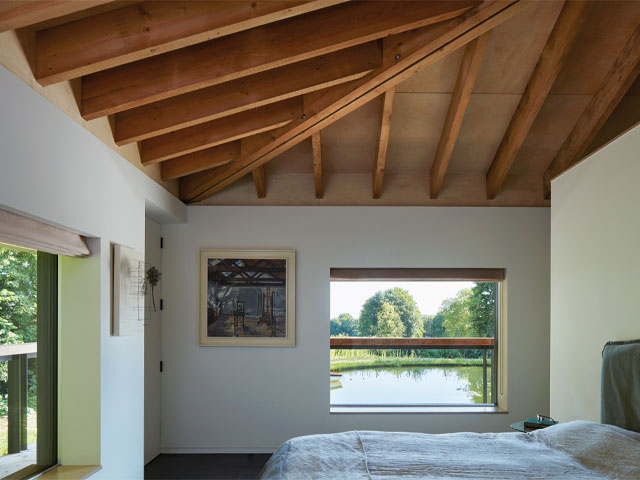
A dividing wall behind the couple’s bed conceals their walk-in wardrobes and dressing area. Photo: James Brittain
Having met nine years ago, Tim and Annie were keen to create their own home together. ‘Instead of renovating, I wanted to start with a blank piece of paper and build something important from the beginning. Plus, in the Cotswolds, every house is a bit chilly – and I quite fancied not being cold,’ Annie explains.
After buying the 1.3-acre plot, they negotiated with a neighbour to fell trees along the south perimeter in exchange for giving them a strip of land.
‘The site felt enclosed, with woodland on two sides and tall trees on the other two boundaries,’ says Annie. Where to orientate the house became clear once there were fewer trees obstructing the view and light. And after realising an initial design would be beyond their budget, the couple hired Nick and Hamish.
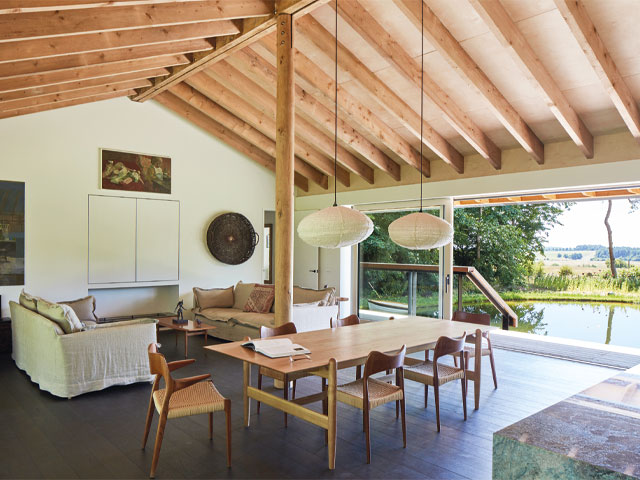
Vintage Niels Møller chairs complement the custom-made dining table. The pendants above are by Abigail Ahern. Photo: James Brittain
On a concrete strip foundation, the house’s supporting steels can be seen beneath the elevated floor. ‘Raising the building gives a vantage point over the view,’ says Nick.
Above the steelwork, the spruce frame – which was constructed on site – includes a few steel beams for structural support over the longer spans and is filled with phenolic and moisture-resistant recycled glass insulation boards. Triple glazing contributes to the high levels of airtightness, limiting heat loss, and the roof overhang acts as a brise soleil to moderate seasonal temperature changes.
Work on site started in December 2019 with Nick project managing the build, visiting frequently to check on progress, and sorting out problems bet ween the main contractor and quantity surveyor.
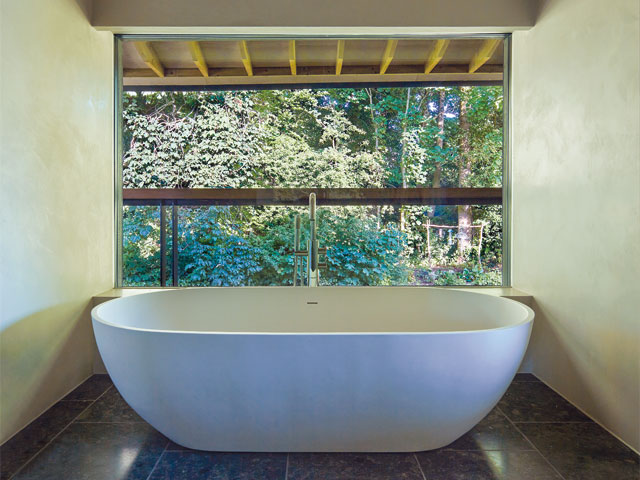
Tim and Annie can enjoy a view of the garden while soaking in the stone resin bath from Indigenous in their en suite. Photo: James Brittain
‘Our contractor did a good job, but they tendered too cheaply,’ says Tim. ‘The surveyor wasn’t qualified, and it became apparent he was out of his depth.’
‘He missed things off the tender document, which led to problems with the contractor,’ Annie continues. ‘Eventually, everyone was arguing about whether or not something was included.’
Alongside this issue, the build went over schedule by four months due to the pandemic and the steelwork installation stalling. Tim and Annie’s budget went over by around £200,000, forcing them to dip into their retirement funds, with Tim delaying full retirement so that they would have an income to finish everything.
‘We supported each other at different times and seem to have got through it OK,’ says Tim. ‘It’s very nice to have something that’s been ours from the inception.
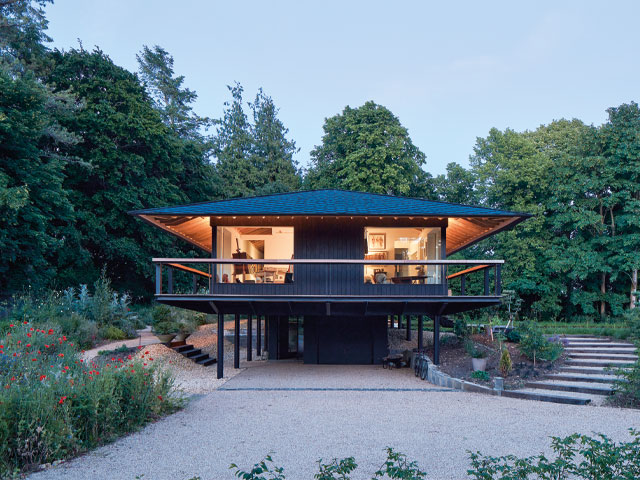
Concealed lighting under the eaves makes the roof look as if it is floating above the house at night. Photo: James Brittain

